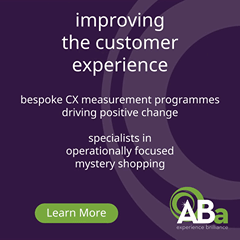Why Brand Trackers are like looking in the rear-view mirror
There is a seismic difference between Brand Management platforms and Brand Trackers
Real-time analysis will make a huge difference to your job, enabling you to optimize marketing actions as you go, monitor the health of your brand over time and help you to prove your marketing value to stakeholders.
But an easy mistake to make is to go for a Brand Tracker, which may hinder your brand’s progress, since these tools are:
- Backward-facing
- Unreactive
- Unactionable
- Unable to attribute causation.
No matter what type of Brand Tracker you go for, it’s a universal fact that all of these tools suffer from being backward-facing. A key problem with Brand Trackers is that the data gathered is outdated before it even gets to the Brand Manager’s hands. This is because the results take months to generate and by the time brands receive these results, they’ll already be onto the next project.
They also don’t incorporate contextual information. A marketing dip cannot show momentum and because so much of Brand Management involves being reactive to what’s happening around you, this is incredibly problematic.
The actual data provided is unactionable. It can be highly overwhelming to receive a report from these trackers, as each report consists of reams of data, usually represented in an inaccessible numerical format, and never providing answers on what to do with that data.
Causation is also hugely difficult to infer from these trackers, as you can only see how your brand progresses over a fixed period of time. This means if your brand completed multiple activations during that same period, you won’t be able to tell which individual event was responsible for your end-result. So, this makes it hard to learn from these findings.
That’s why a Brand Management platform will always win over a Brand Tracker. Why spend months on a limited piece of paper that you can’t action, when you can get a cheaper platform on demand, at the click of a button?
What Brand Management platforms can do that Brand Trackers can’t:
- Track momentum so you can optimize as you go
- Provide actionable data
- Correlate spend with impact
A key component of a Brand Management platform is that it can track momentum. This is crucial for brand growth, as it will show how your brand is progressing over time. Instead of spending on marketing dips to see how your brand has improved over the course of a year, all of your data will be housed in an easy-to-use platform that shows your progress in a linear way. This momentum will keep you on the frontlines of your brand. So, instead of leaning back and putting too much emphasis on end results, why not see what’s working and what’s not, in real-time so you can learn from your actions?
Because all of the data is in real-time, you will be able to optimize your actions as you go along. Noticing a campaign that’s not performing as well as you’d like? Don’t lose this campaign. Alter your creatives or your communications as you go, to boost overall performance.
Actionable data is also a key advantage of having a platform. Because you’re not overwhelmed with masses of unrelatable data, like Brand Trackers, you’re able to see clearly which move to make next for maximum impact. With a platform, you’ll typically be able to see data in a much clearer way, as you can filter and customize your data. so it’s arranged in your optimal setting. This makes it easier to draw links and connections quicker so you can make the most out of your data.
Correlating spend and impact is also a breeze with a platform, as you can input events into these platforms to see how your data is affected by real life moments. Usually you can input brand events, like campaign launches and product releases, but also more significant life events, like COVID-19. This allows you to monitor how changes in the real world are impacting your brand performance, so you can plan around these.
A huge difference between a Brand Tracker and a Brand Management platform is the active nature of a platform. Both in terms of the fact that it’s always-on but also because you can make decisions and see the impact of these decisions in the platform. The information from a Brand Tracker would usually be glanced at once and thrown away, whereas a platform isn’t discardable, it’s smart technology that you’ll engage with and see clear positive outcomes from.
We may be biased but ProQuo, in our humble opinion, is the Brand Management platform to use. It runs off AI and allows you to not only see how real people feel and think about your brand, category and competition, but also tells you exactly what to do with this data through custom action-plans. These plans are based off your own goals, giving your brand the best chance for growth. It’s a dynamic, ever-evolving platform, that’s always-on, tracks the momentum of your brand, and is crucial for seeing how effective your marketing actions have been on your commercial metrics.














